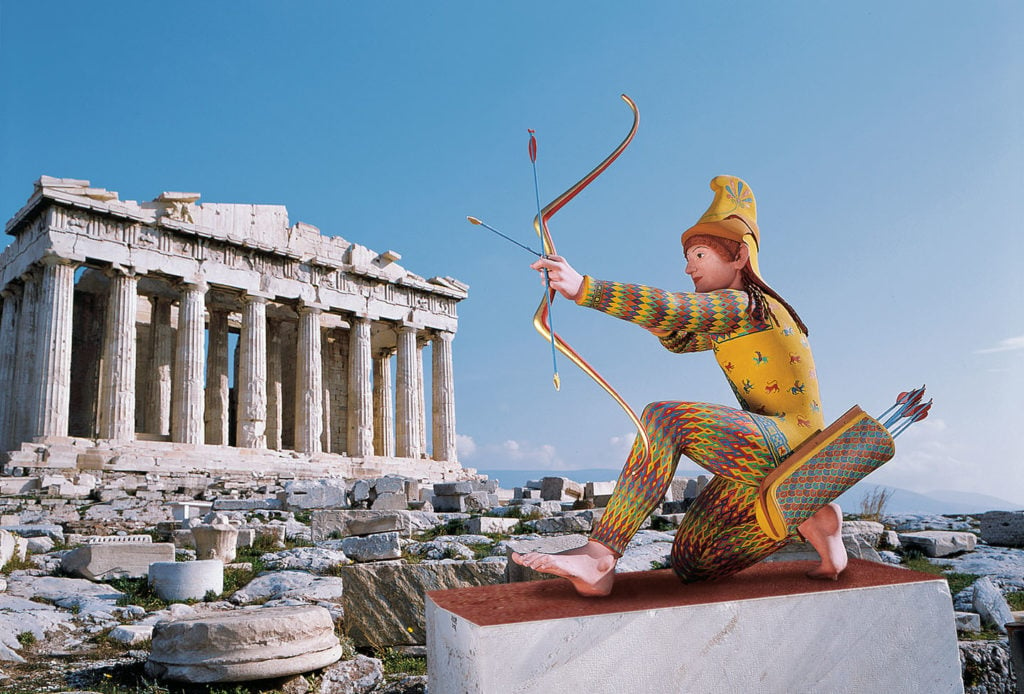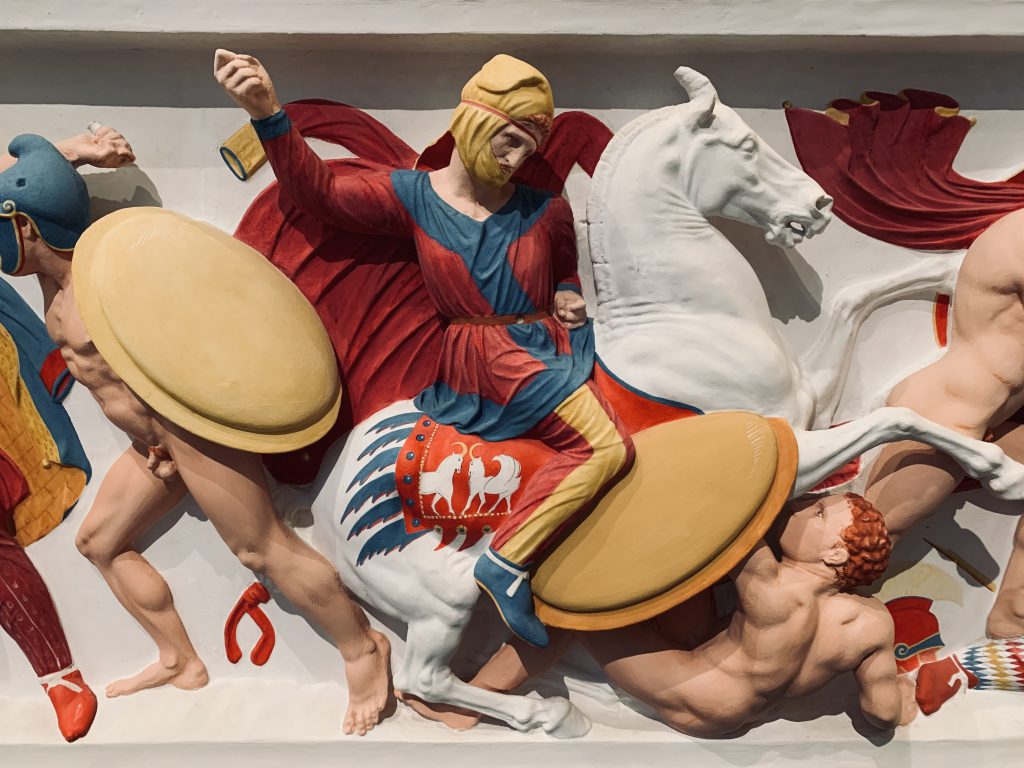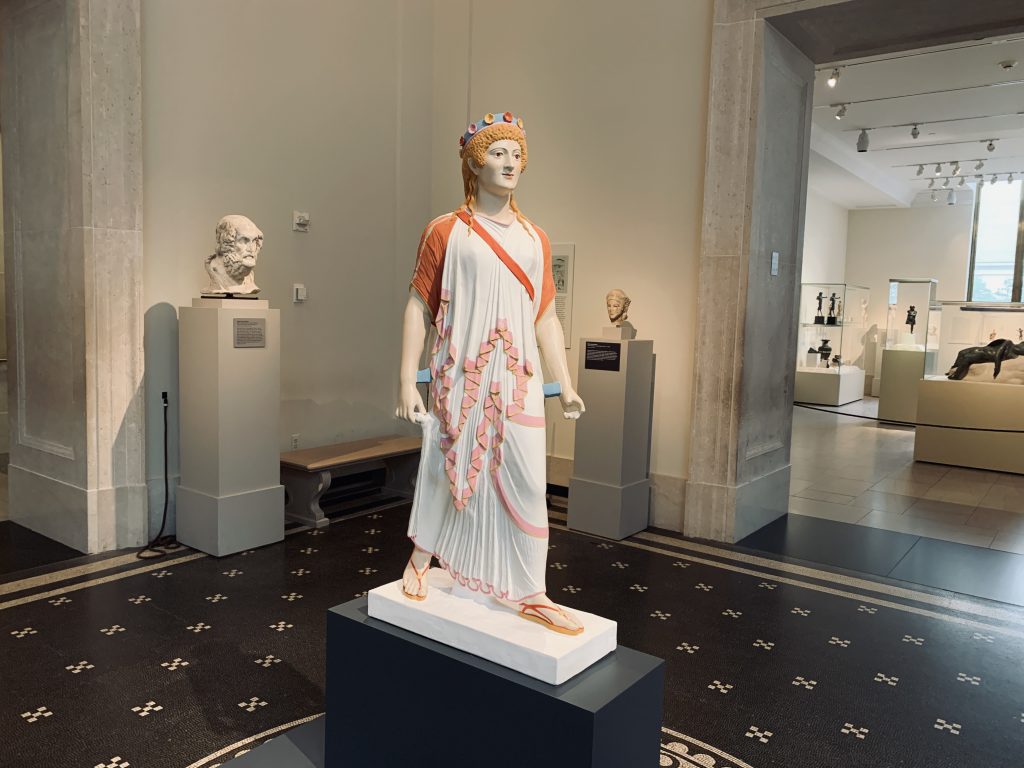Art World
Art Bites: The Lost Colors of Ancient Greek Sculptures
Ancient sculptors were liberal in their use of hues.

What’s the deal with Leonardo’s harpsichord-viola? Why were Impressionists obsessed with the color purple? Art Bites brings you a surprising fact, lesser-known anecdote, or curious event from art history. These delightful nuggets shed light on the lives of famed artists and decode their practices, while adding new layers of intrigue to celebrated masterpieces.
Once a generation, it seems, society is startled to learn that antiquity’s marble sculptures buzzed with color in their heyday, rather than the numinous white of their base material. Landmark shows such as “Gods in Color,” which toured from 2003 to 2015, and “Chroma: Ancient Sculpture in Color” at the Metropolitan Museum of Art in 2022 have embodied this era’s reckonings, offering reminders that ancient Greeks didn’t find bright colors garish. In fact, they were used extensively for their beauty, and to help delineate figures from far away.
The conviction that Greek marbles were white did stem from observation. Most examples unearthed were bereft of color by the time modern academics laid eyes on them. The pigments on these sculptures faded following centuries underground, exposure to the elements, and the cleanings they received upon discovery. Still, there was evidence of their polychromy, especially throughout Greek literature. In Euripides’s play Helen, the leading lady famously remarks, “If only I could shed my beauty and assume an uglier aspect, the way you would wipe color off a statue.”

Installation view of “Chroma” at the Metropolitan Museum of Art. Photo: Min Chen.
In the late 18th and early 19th centuries, many academics believed “that coloring statues was frequent in primitive art but ceased in the classical period.” However, the tide began to turn as scholars such as Jacques Ignace Hittorff, in his 1851 study “On the Polychromy of Greek Architecture,” began to pick up on minute traces of paint on classical architecture and sculptures.
Scholars have batted back and forth, especially over the past decade, but most now know for a fact that the great marbles of Greece were, by and large, brilliantly painted in their heyday. The Met’s third-ever director Edward Robinson and curator Gisela M.A. Richter championed last century’s insights into the matter. Robinson “encouraged the acquisition of sculptures that still bore paint traces,” the Met writes, and Richter co-published a 1944 paper about efforts to determine the original colors of such sculptures, including Attic gravestones and a now-iconic Sphinx. Their big advancement was proving that Greeks painted the flesh on their figures, too.

Installation view of “Chroma” at the Metropolitan Museum of Art. Photo: Min Chen.
Today, modern techniques such as ultraviolet photography and microscopic analysis have made it possible to better understand how ancient Greeks used color. The high-tech work of researchers Vinzenz Brinkmann and Ulrike Koch-Brinkmann has been instrumental to “Gods in Color” and the vividly colored, 3D-printed recreations in “Chroma.”
Last October, researchers confirmed that even the Parthenon Marbles were painted in a spectrum of hues. Previous studies had tried and failed to find pigment on their spectacular facades, but these latest efforts employed digital imaging techniques that can detect particles on an unprecedented, microscopic level. Using visible-induced luminescence, traces of Egyptian blue and Tyrian purple pigments were found on the sculptures—a palette that researchers believe could have inspired other Hellenistic craftspeople.





